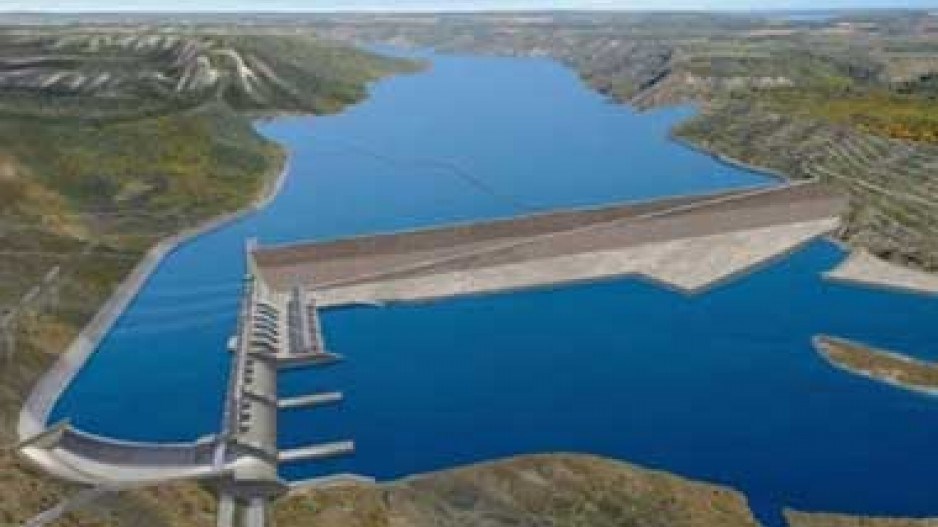Site C is not a fait accompli “despite rumours to the contrary,” Energy and Mines Minister Bill Bennett said last week, one day after federal and provincial regulators gave the $7.9 billion hydroelectric dam project an environmental certificate.
Bennett has all but written off meeting B.C.’s rising power needs through natural-gas-fired thermal generation.
That means it’s now down to one large, publicly funded mega-project that will take 10 years to build and power up all at once, or several smaller renewable energy projects financed by independent power producers (IPPs) – under long-term power purchase agreements with BC Hydro – coming online as needed.
Clean Energy BC stepped up the pressure last week in support of independent power producers with the release of a new analysis it commissioned London Economics International LLC to conduct that concludes the B.C. government could save $750 million to $1 billion over 70 years if it got its power from IPPs rather than Site C.
“We’re saying that we can meet the energy capacity that they need,” said Clean Energy BC executive director Paul Kariya.
Until recently, it seemed unlikely the B.C. government would back away from its support for Site C. But Bennett last week appeared to leave the door open to IPPs.
B.C.’s demand for power will rise 40% over the next two decades, Bennett said. With a capacity of 1,100 megawatts, Site C would meet 8.5% of B.C.’s total power needs. Once built, the dam could last a century.
But the dam comes with some high environmental costs – mainly in the flooding of prime agricultural land in the Peace River valley – and is vigorously opposed by two Treaty 8 tribes. Chief Roland Willson of the West Moberly First Nation has told Bennett that his government can have Site C or liquefied natural gas, but not both.
Unlike Site C, First Nations in B.C. have generally supported small renewable energy projects like run-of-river. In fact, a number have been built in partnership with First Nations.
Critics have said the public pays a premium for clean power. Bennett conceded that the cost of wind and other renewable power sources has dropped in recent years. He also admitted that there may be a public benefit to having the private sector finance new power generation.
“There is a benefit, I think, to having the private sector take on the risk and take on the debt,” he said.
The IPP sector has flourished under the Liberal government. Twenty per cent of B.C.’s power now comes from IPPs, mostly from run-of-river power and wind farms.
But because renewables are intermittent, they need to be backstopped with firm power generation, and Clean Energy BC argues that B.C. has some of the best batteries in the world: hydroelectric dams.
But Bennett said the clean-energy sector needs to include the cost of using those publicly funded dams for firming up the prices they quote to government. It also needs to include the cost of tying new power projects into the grid, which could be substantial for wind farms in remote regions of B.C. that are far from transmission lines.
“We will have to be assured that whatever price the private sector states that they can deliver electricity into the grid for is an all-in, all-inclusive price,” Bennett said.
“That’s fair,” Kariya said. “Set the terms of procurement and let my industry meet it.”
But he added that his industry also wants to see the “all-in” costs of Site C.
“Have they built in management costs?” Kariya said. “I don’t think so. Have they built in all the First Nation accommodation costs? I don’t think so.”
David Austin, a lawyer specializing in energy policies, said BC Hydro’s contingency is low, based as it is on annual interest rates of 1.2% to 1.3% over 10 years, when the annual inflation rate for a comparable hydroelectric project in Manitoba was estimated at 3.2% to 3.4% over five years.
Bennett said he plans to make a final recommendation to cabinet next month on whether to proceed with Site C.
1,100MW (450,000 homes): Site C's annual capacity 1,044MW: Power generation from IPPs $92.20: Site C's energy costs per MW-h $85: IPP renewable power costs per MW-h |




